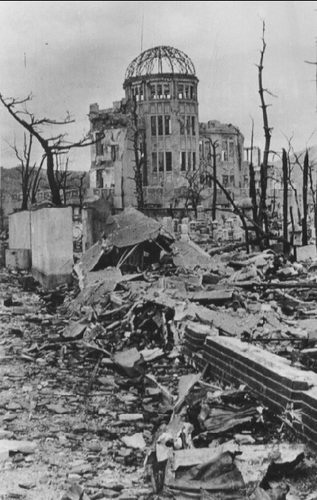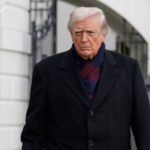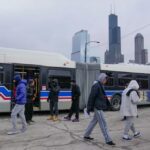
–>
August 15, 2022
In a 1945 summary, a U.S. Army Air Forces unit on Okinawa described August as “an eventful month in world history.” That understatement holds up 77 years later.
‘); googletag.cmd.push(function () { googletag.display(‘div-gpt-ad-1609268089992-0’); }); }
Events had accelerated in the spring and summer of 1945. Germany surrendered on May 8 but Russia already was shipping massive amounts of men and materiel eastward. Moscow and Tokyo had a non-aggression treaty that Soviet premier Joseph Stalin cancelled on August 9. That night a massive Russian assault into Japanese-held Manchuria opened the Far East end game, briefly overlapping impending Japan’s surrender to the Allies.
American forces began deploying from Europe and the continental United States, anticipating the two-phase Operation Downfall invasion of Japan’s home islands. The first assault, on the southern island of Kyushu, was slated for November. The second, on the main island of Honshu, was due in March 1946.
Meanwhile, the atomic age had dawned with a 20-kiloton flash in the New Mexico desert on July 16. The three-year Manhattan Project yielded awe-inspiring results, and Tokyo’s refusal of the Allies’ Potsdam demand for unconditional surrender ensured that the atoms would be loosed. B-29 Superfortresses from the Mariana Islands 1,500 miles southeast of Japan were prepared to conduct “special missions” beyond conventional methods. An A-bomb destroyed Hiroshima on August 6 and, lacking any reply from Tokyo, a second weapon leveled Nagasaki three days later.
‘); googletag.cmd.push(function () { googletag.display(‘div-gpt-ad-1609270365559-0’); }); }
Even then, Japan’s war cabinet remained evenly divided between surrender and continued war. Finally, on August 15, Emperor Hirohito exerted unprecedented personal involvement in government affairs. His decision “to bear the unbearable” was met with fierce resistance in the palace guard but the plotters were quickly overcome. In his announcement Hirohito credited the A-bombs with his decision, citing “a most cruel new weapon.”
For three decades a bitter feud was fought in an information vacuum with academics and others arguing whether the bombs were necessary. The mantra “Tokyo was about to surrender” gained some public traction despite clear evidence to the contrary. Then from the 1970s to the 1990s declassified documents showed that President Harry Truman and his advisers were reading Tokyo’s mail via decoded messages. Hirohito’s intervention was the only way to break the logjam.
Speculation as to the cost of invading Japan continues today. General Douglas MacArthur, the vainglorious Army supremo who would command Operation Downfall, discounted intelligence (understated, as it proved) showing the Japanese heavily reinforcing Kyushu’s defenses. His personal goal was leading the greatest military operation of all time. But that summer the U.S. government ordered an additional half million Purple Heart medals for expected killed and wounded in Downfall — enough to last into the Vietnam War of the 1960s and 1970s.
However, the U.S. Navy had second thoughts. The Pacific Fleet’s Admiral Chester Nimitz knew all too well the cost of the three-month Okinawa campaign, especially facing Kamikazes that had sunk dozens of ships and damaged hundreds since the Philippines operation from October 1944.
Nimitz’s superior in Washington, Admiral Ernest King, shared reservations about Operation Downfall. Neither admiral doubted it would succeed, but at what cost?
The only viable option was continuing blockade. At some point Japan would face massive starvation — there were already food riots that spring — with consequences likely exceeding military conquest. Aside from deaths in Japan itself, postwar analysis estimated 100,000 deaths on the Asian mainland, per month, almost entirely from war-related disease and starvation. As it was, Japan inflicted about 20 million deaths upon Asia-Pacific nations.
‘); googletag.cmd.push(function () { googletag.display(‘div-gpt-ad-1609268078422-0’); }); } if (publir_show_ads) { document.write(“
 Meanwhile, the postwar world was taking shape. Outgoing British prime minister Winston Churchill coined the phrase “iron curtain” that summer, anticipating Russia’s draconian policies in Eastern Europe. Residents of Poland, Czechoslovakia, the Balkans, and the Baltic states realized that they had exchanged Nazi tyranny for the Soviet variety.
Meanwhile, the postwar world was taking shape. Outgoing British prime minister Winston Churchill coined the phrase “iron curtain” that summer, anticipating Russia’s draconian policies in Eastern Europe. Residents of Poland, Czechoslovakia, the Balkans, and the Baltic states realized that they had exchanged Nazi tyranny for the Soviet variety.
Apart from China, the world was also reshaping itself in Asia. The colonial era ended in India, Indonesia, and Vietnam. In fact, Vietnamese leader Ho Chi Minh declared a provisional government on September 2, the day Japan signed the surrender in Tokyo Bay. The war against French occupation lasted until 1954.
At the same time, India’s independence movement under Mahatma Gandhi bore fruit in 1947 while Indonesia fought a long internal war against Communist insurgents until 1949.
Prior agreement between the U.S. and Russia divided Korea in the middle, at the 38th parallel, setting the stage for Pyongyang’s three-year war in 1950.
Though Japan announced its surrender on the 15th, Pacific time, those at the sharp end continued fighting, killing, and dying. Earth’s time zones affected the process, as the last B-29 bombing mission took off the afternoon of the 14th and was returning to its roosts after midnight. But U.S. and British Pacific Fleet units in Japanese waters still conducted scheduled missions, resulting in several clashes. Of six USS Yorktown fighters jumped by enemy aircraft, only two pilots survived. Other dogfights lasted into the afternoon as some Japanese doubted the surrender announcement or chose to ignore it.
America’s final combat fatality — Pennsylvania’s Sergeant Anthony Marchione — died on a photographic mission on August 18.
The formal end of six years of combat occurred in a barely half-hour ceremony aboard the battleship USS Missouri in Tokyo Bay, September 2. “Operation Airshow,” the overflight of Tokyo Bay, made dramatic film footage but a squadron commander confided that the crowded sky beneath low clouds caused more fear than he experienced in combat.
Elsewhere, of course, the lid was off. Joyous celebrations erupted around the world, most notably an estimated two million New Yorkers who jammed Times Square when Japan’s surrender was confirmed. The iconic Life magazine photo of a sailor kissing a “nurse” (a dental technician) remains a vivid depiction of that ecstatic moment.
But not all celebrations were justifiable. From Boston to San Francisco, days of riotous behavior broke out with violent clashes between servicemen and police. Deaths, assaults, and vandalism often went unpunished — ill suiting the misty-eyed image of “the greatest generation.”
About 405,000 Americans died in World War II — one family lost four sons and another lost five — plus nearly 700,000 wounded or injured. But in turn, the VJ Generation returned dozens of nations to their rightful owners, and that was greatness itself.
From 1939 to 1945 Earth’s 100 or so nation-states lost perhaps 3 percent of their 2.3 billion humans to all war-related causes. The specific numbers keep increasing (partly due to Soviet juggling) from an estimated 50 million in the 1990s to as high as 85 million today. Currently all losses to military action, including civilians, run between 50 and 60 million.
Today there are 195 nation-states with nearly 8 billion inhabitants. They continue living with the benefits and downsides that characterized the Second World War seven decades ago.
Barrett Tillman is a professional author, historian, and commentator. His current book is August 1945: When the Shooting Stopped, from Bloomsbury-Osprey.
Image: Public Domain
<!– if(page_width_onload <= 479) { document.write("
“); googletag.cmd.push(function() { googletag.display(‘div-gpt-ad-1345489840937-4’); }); } –> If you experience technical problems, please write to [email protected]
FOLLOW US ON
<!–
–>
<!– _qoptions={ qacct:”p-9bKF-NgTuSFM6″ }; ![]() –> <!—-> <!– var addthis_share = { email_template: “new_template” } –>
–> <!—-> <!– var addthis_share = { email_template: “new_template” } –>





